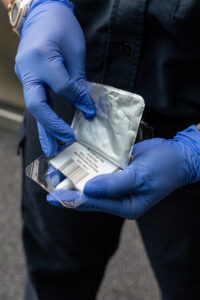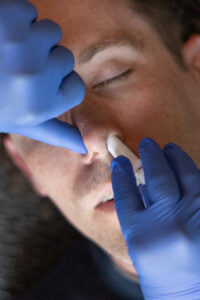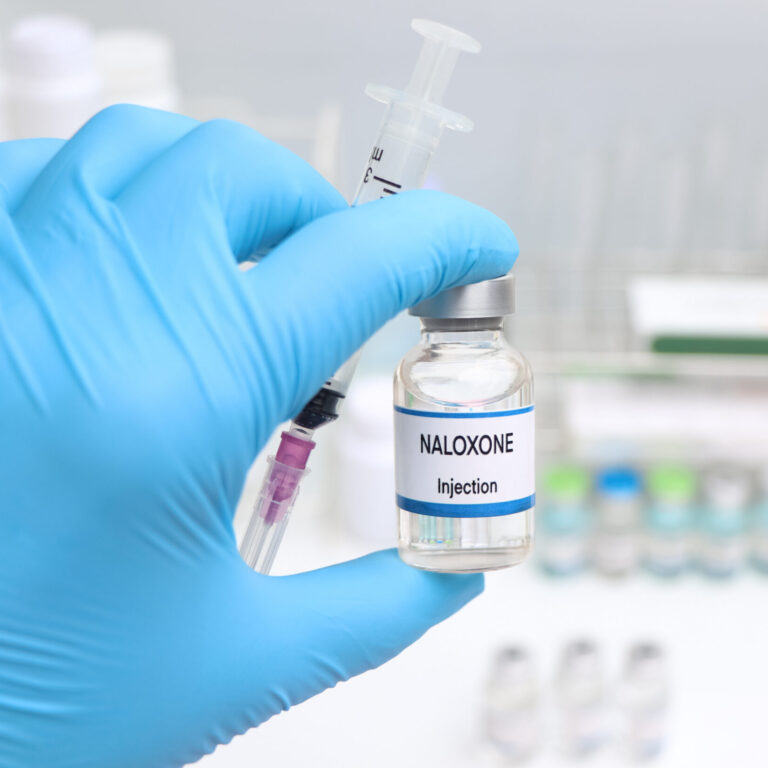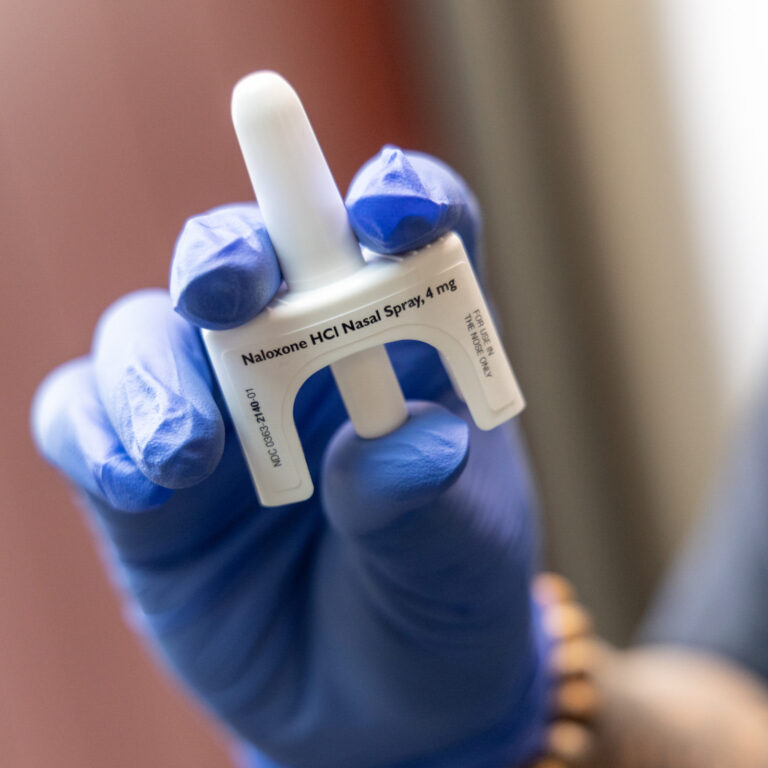Naloxone
Signs of an opioid overdose
- Unresponsive or very hard to wake.
- Skin is blue or grey and cold.
- Slow, shallow, or no breathing.
- Gurgling or snoring-like sounds.
- Constricted or pinpoint pupils.
How to respond to an opioid overdose
- Call 911.
- Administer naloxone.
- Do rescue breathing, if trained.
- Stay with the person. Wait for emergency responders.
Administering naloxone


Administer naloxone as soon as possible. It’s safe to use even if they aren’t overdosing.
Peel off the wrapper, tilt their head back, place it in their nose and press to spray.
If they are still unresponsive after two to three minutes, use another dose in the other nostril.
Use multiple doses if you need to until emergency responders arrive.
Monitor them after administering naloxone.
How naloxone works
Naloxone (Narcan) is an opioid overdose reversal drug. It’s safe and non-addictive.
Most commonly, it’s a nasal spray. You can also get it as injection.
It binds with opioids and blocks the effects on your system.
If there are no opioids present, it does nothing. You can’t overdose on naloxone, and people often need multiple doses.


https://youtu.be/Bq99qn_UHZEhttps://vimeo.com/357020563
Get it. Carry it. Use it.
You can get naloxone at most pharmacies without a prescription.
Most insurance covers the cost, or you may be able to get it free from a community organization like:
- Tacoma-Pierce County Health Department.
- Tacoma Needle Exchange.
- The People’s Harm Reduction Alliance.
Find naloxone near you in Washington.
